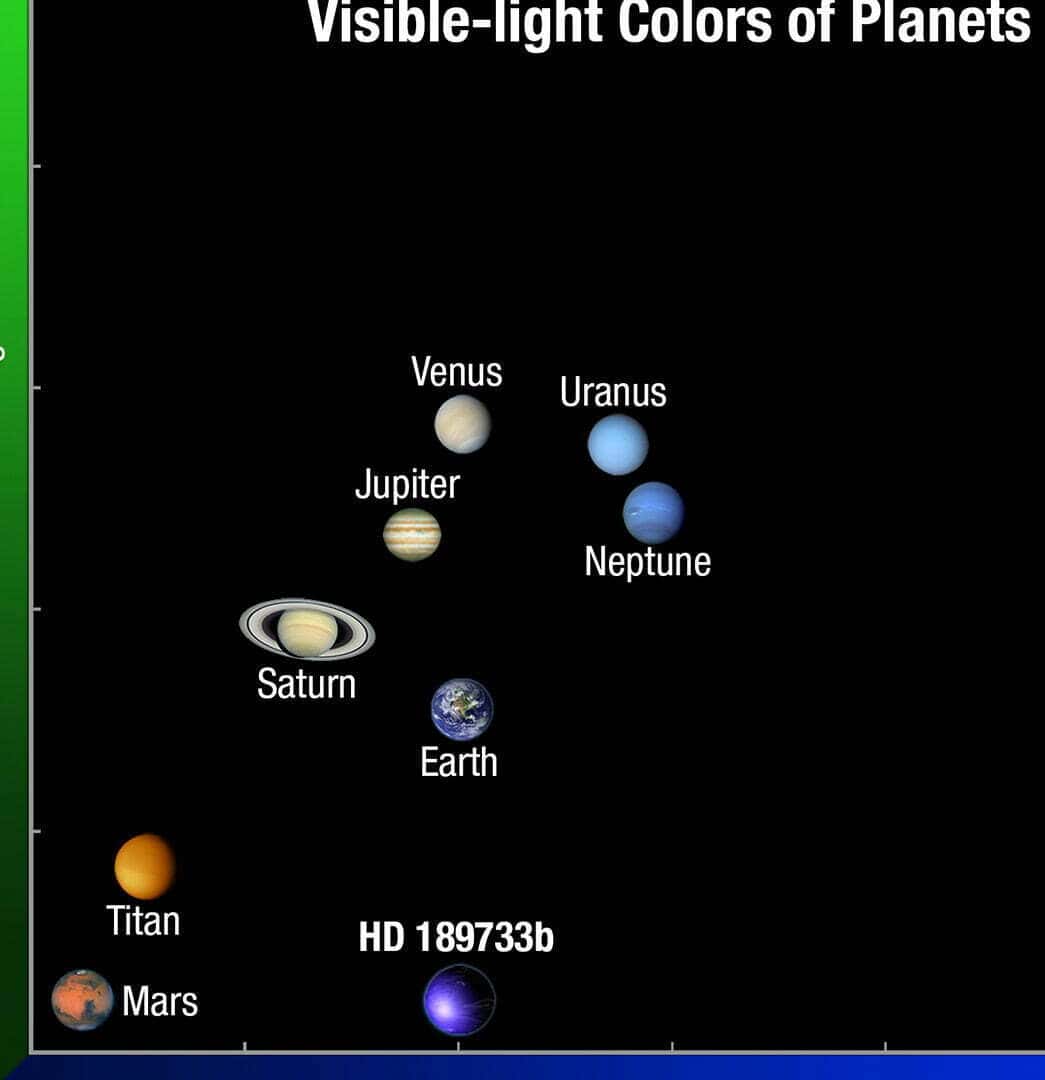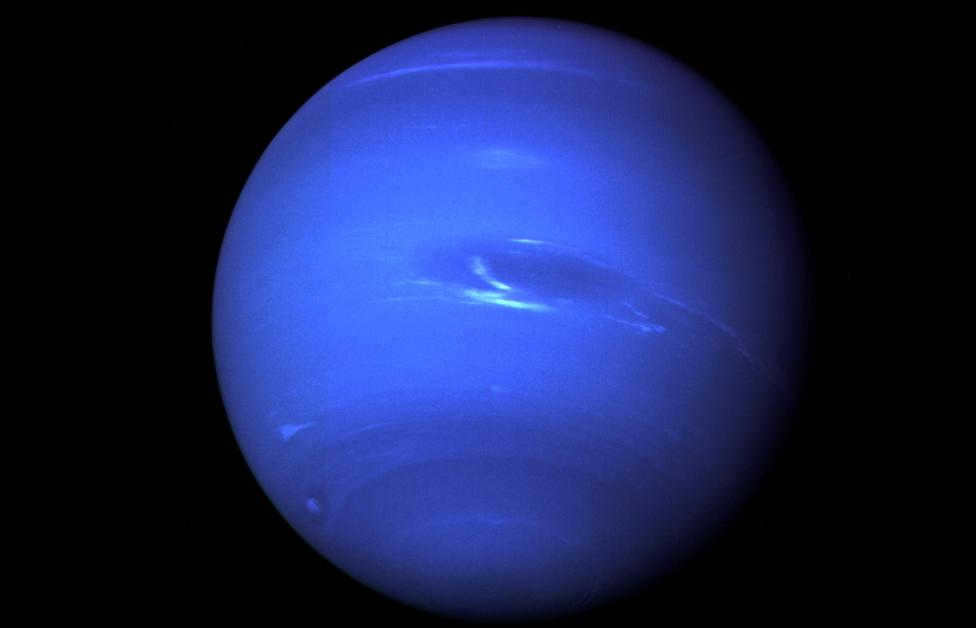
On June 9, we celebrate the anniversary of Johann Halle, an astronomer from Germany who made the remarkable discovery of Neptune during the 1800s.
Joining forces with the editors of the renowned scientific website “Attic,” let’s recall our knowledge about this fascinating planet, delve into the mystery behind its striking blue hue, and indulge in some gossip about Triton (rumor has it that this moon might not actually belong to Neptune!).
How was Neptune discovered?
1
Neptune, the eighth planet in the solar system, was discovered through a series of scientific observations and calculations. Prior to its discovery, astronomers believed that there were only six planets orbiting the Sun. However, the discovery of Uranus in 1781 raised suspicions that there may be another celestial body beyond it.
Scientists began to study the orbit of Uranus and noticed irregularities that could not be explained by the gravitational pull of known planets. These irregularities suggested the presence of a massive object exerting gravitational influence on Uranus.
These suspicions were reinforced by a mathematical observation: in 1766, the German scientist Johann Titius made a noteworthy observation that the distances between the known planets and the Sun followed a simple pattern. Initially, these calculations did not generate much excitement, but when it was discovered that the newly found planet Uranus also adhered to Titius’ regularity, the mathematician’s calculations gained recognition.
However, Neptune, which was discovered in 1846 by Johannes Halle, defied the expectations of astronomers by being located too close to the Sun, measuring 30.1 astronomical units (a.u.) instead of the anticipated 38.8. As a result, Titius’ regularity fell out of favor once again, and even the subsequent discovery of Pluto at a distance of nearly 39.5 a.u. could not salvage it.
What is known about Neptune?
2
Neptune is classified as a gas giant. The vast majority of the planet is composed of a highly dense and scorching combination of water, ammonia, and methane, and it is likely that there exists a solid core similar in size to Earth.
The planet’s atmosphere consists mainly of hydrogen, helium, and methane. It is the presence of methane that gives Neptune its distinctive blue hue, as methane has the ability to absorb red light.
A single day on Neptune lasts for approximately 16 hours, while a year on the planet is equivalent to 165 Earth years.
3
The only spacecraft that had a close encounter with Neptune was Voyager 2, which flew by the planet and its moons on August 24-25, 1989.
During that time, Voyager 2 was able to observe six of Neptune’s moons (there are now a total of 14 known moons), including Triton, the largest one.
Triton’s orbit is in the opposite direction of the planet’s rotation, suggesting that it may be a captured alien object that has been drawn closer to Neptune by its gravitational pull.
Scientists speculate that in millions of years, Triton will be torn apart by gravitational forces and become another ring around Neptune.
The presence of the latter was also verified by Voyager. Strange accumulations were discovered in the rings of Neptune, despite the expectation that dust clumps should be evenly distributed throughout the ring. Scientists propose that the gravitational pull of one of Neptune’s satellites, Galatea, is responsible for this phenomenon.
Ekaterina Borovikova
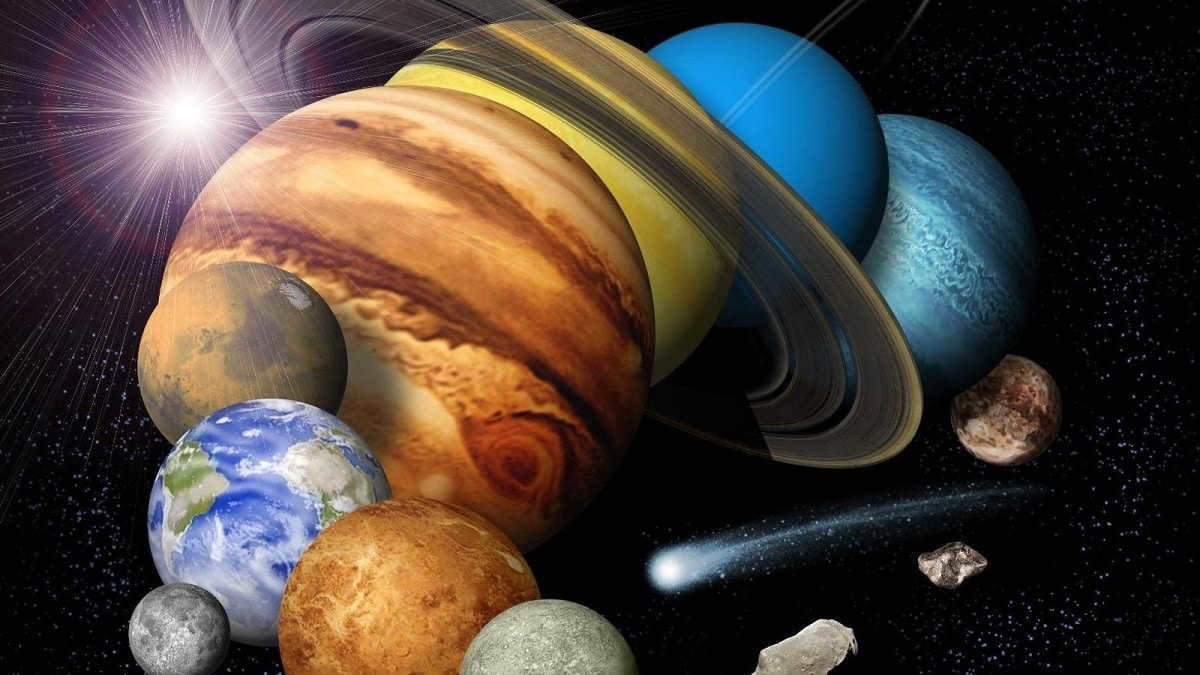
As you are aware, the solar system is comprised of eight planets, each with its own unique color. Many individuals have reservations regarding the authenticity of the planetary colors within the solar system. It is common knowledge that the images we perceive of the planets are not an exact representation of reality. Often, these images are modified or enhanced for various purposes. Consequently, our knowledge regarding the true colors of the planets within the solar system remains somewhat uncertain.
In this article, we aim to disclose the complete truth about the colors of the planets within the solar system, along with their primary characteristics.
Processing of images

Image processing is a widely practiced technique in the field of astronomy. It is well-known that planets are situated at a considerable distance, making it challenging to perceive them clearly. This is where the significance of image processing arises, not only for planets but also for various celestial objects, particularly nebulae. Filters and color enhancements are frequently employed to facilitate observation and differentiation between different planetary entities. The objective is not to conceal any information, but rather to serve practical purposes.
This leads to the question of whether the colors of the planets in our solar system accurately correspond to the colors portrayed in the manipulated images. While we are aware that our own planet appears as a blue sphere due to the prominence of the ocean, the extent to which other planets retain the same colors as depicted in the edited images remains uncertain.
We are aware that the planet is terrestrial and consists primarily of minerals and silicates, resulting in a gray or oxidized mineral hue. To determine the colors of the planets in our solar system, one must take into account the composition of their atmospheres, as this affects their ability to absorb and reflect sunlight, ultimately impacting their overall appearance.
The different colors of the planets within our solar system
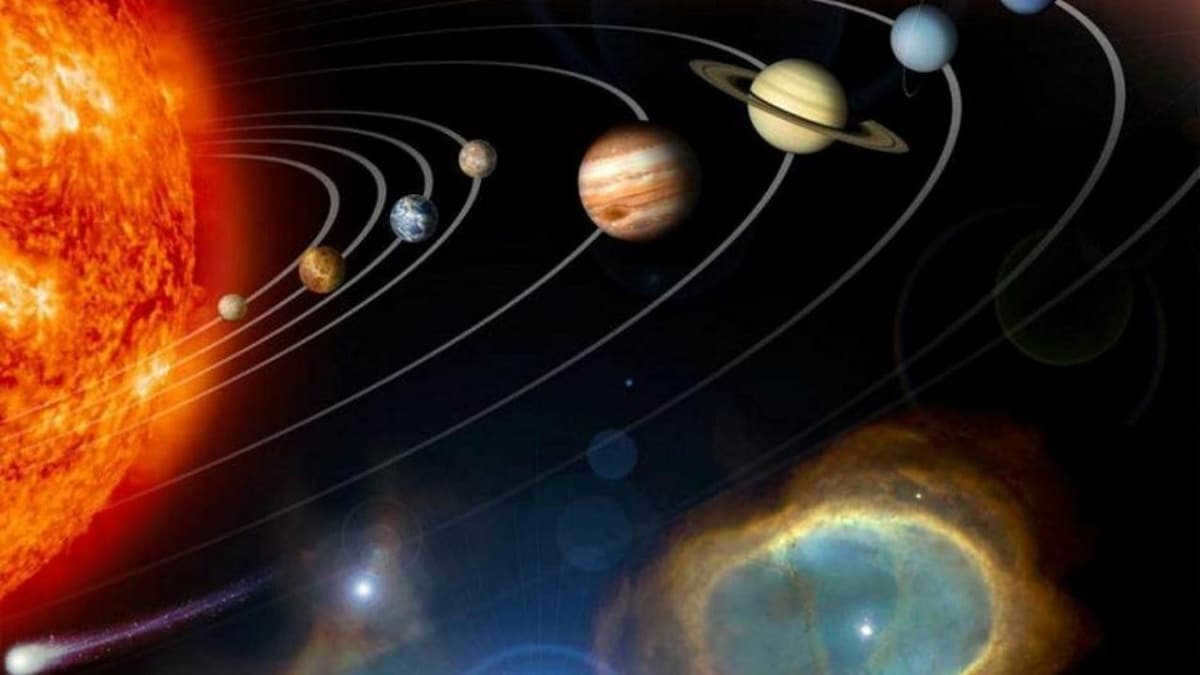
Let’s examine the various hues of the planets in our solar system.
Mercury
Capturing clear photos of Mercury is incredibly challenging due to its close proximity to the sun. Even powerful telescopes like Hubble struggle to obtain practical images. The planet’s surface bears a striking resemblance to the moon, displaying a range of colors from gray to mottled. Its surface is also marked by numerous craters resulting from asteroid impacts.
Being a rocky planet primarily composed of iron, nickel, and silicates, Mercury appears in a dark gray shade with a stony texture, owing to its thin atmosphere.
Venus
When observing Venus, the position we take plays a crucial role. Despite being a rocky planet like Earth, Venus has a remarkably dense atmosphere consisting of carbon dioxide, nitrogen, and sulfur dioxide. Consequently, when observing Venus from orbit, all we can see is a dense layer of sulfuric acid clouds and a lack of surface detail. This gives Venus a yellowish color when viewed from space, as the sulfuric acid clouds absorb the blue color.
However, the view from the ground is vastly different. We know that Venus is a terrestrial planet similar to Earth, but devoid of vegetation or water. Consequently, its surface is rugged and rocky. Determining the true color of the surface is challenging due to the blue hue of the atmosphere.
The hues of the celestial bodies in the cosmic system: Our Home Planet
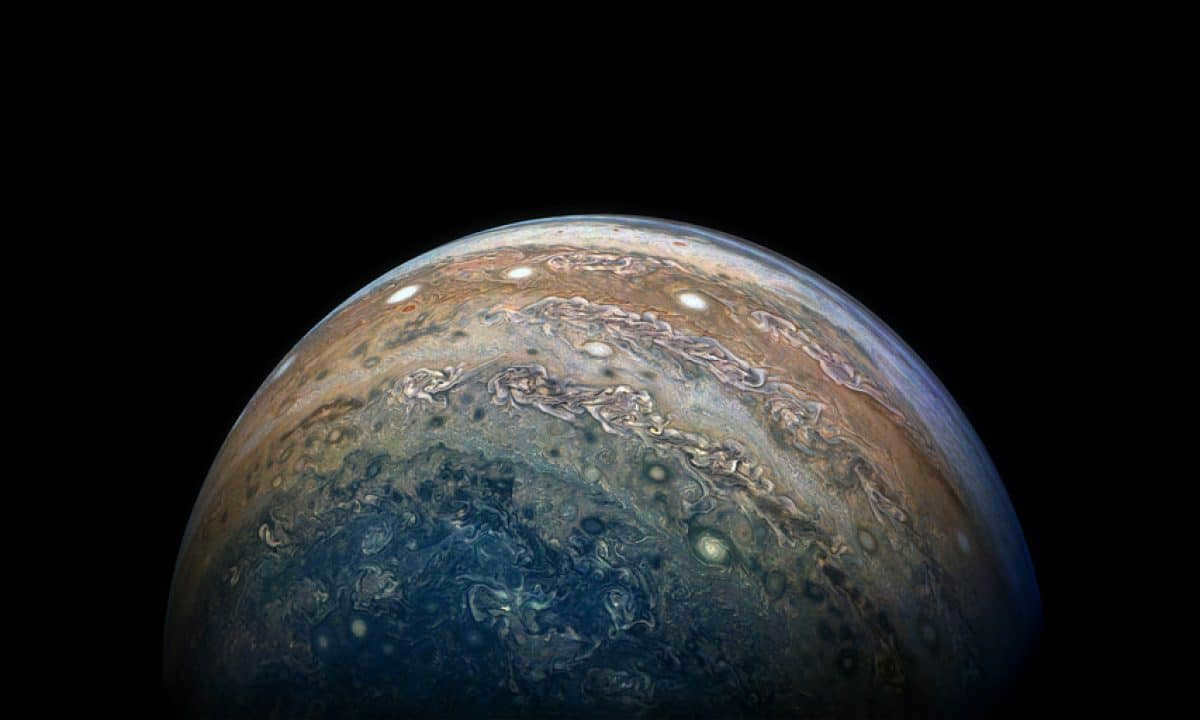
The dominant feature of our world is the vast expanse of water, while our atmosphere contains abundant amounts of oxygen and nitrogen. The phenomenon of color is a result of the interaction between light and our atmosphere and oceans. This interaction causes the scattering of blue light to a greater extent than other colors due to its shorter wavelength. Additionally, it is important to acknowledge that water absorbs light from the red portion of the electromagnetic spectrum. Consequently, when observing planet Earth from the vantage point of space, it appears predominantly blue in color. This is what gives our planet its distinct blue hue.
Mars
Mars, also known as the red planet, is a planet with a thin atmosphere that is closest to Earth. It has been visible to us for over a century, and recent advancements in space travel and exploration have revealed that Mars has many similarities to our own planet. The majority of Mars has a reddish hue, which is caused by the presence of iron oxide on its surface. This distinctive color is also accentuated by the planet’s rarefied atmosphere.
The hues of the planets in our celestial system: Jupiter
Jupiter boasts a distinctive visage with its intermingling orange and brown bands along with other streaks of white. This unique coloration is a result of its constitution and atmospheric phenomena. It is understood that the outer layers of Jupiter, with their enveloping atmospheres, comprise of swirls of hydrogen, helium, and other particles that are capable of rapid motion. The shades of white and orange observed on Jupiter are a consequence of the interactions between these compounds, which undergo chromatic transformations when exposed to ultraviolet radiation emitted by our sun.
Saturn
Saturn bears a resemblance to Jupiter in terms of its visual appearance. It, too, is a gaseous planet adorned with intricate streaks that span its entirety. However, due to its lower density, these streaks in the equatorial region tend to be thinner and wider. The planet’s composition primarily comprises hydrogen and helium, along with traces of volatile elements like ammonia. As a result of the interplay between red ammonia clouds and the sun’s ultraviolet radiation, these streaks display a mesmerizing color palette of pale gold and white.
Uranus
Uranus is a vast icy gas giant primarily composed of molecular hydrogen and helium. It also contains traces of ammonia, hydrogen sulfide, water, and hydrocarbons. These elements contribute to its distinctive bluish hue, reminiscent of the color of seawater.
Neptune
Neptune, the outermost planet in our solar system, shares many similarities with Uranus. Its composition is predominantly hydrogen and helium, with small amounts of nitrogen, water, ammonia, methane, and various hydrocarbons. Due to its greater distance from the sun, Neptune appears to have a darker shade of blue.
By delving into the colors of the planets within our solar system, we hope to enhance your understanding of these celestial bodies.
This article adheres to our editorial ethics guidelines. If you spot any inaccuracies, please click here to report them.
Summary of the Full Article: Network Meteorology " astronomy " The Colors of the Planets in the Solar System
In 1989, the Voyager 2 spacecraft provided valuable information about the color of Neptune, which had previously been unknown due to its great distance from Earth. It was discovered that the planet’s color is not uniform and features spots that resemble those found on Jupiter.
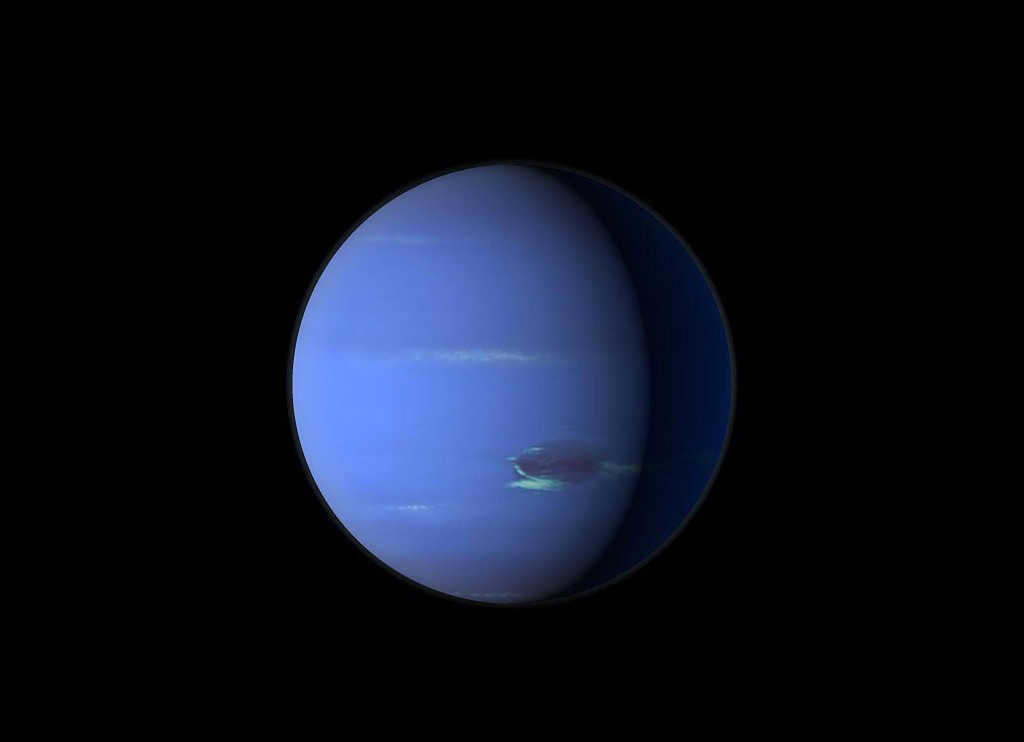
The Surface Color of Neptune
Due to Neptune’s distant orbit from Earth, it is not observable to the naked eye and appears as a mere star-like dot in the night sky.
Observations made with powerful telescopes and space probes that have approached Neptune at an appropriate distance have provided insights into the color of this remote celestial body.
Neptune is classified as a gas giant, devoid of a solid surface in the conventional sense. As such, it is not possible to discuss the color of its soil or crust. The only solid component present in this planet is its core, which is surrounded by gas.
When Voyager sent back images of Neptune to Earth, it revealed a stunning blue sphere. In stark contrast to its pale neighbor Uranus, Neptune boasts a vibrant and intense shade reminiscent of lapis lazuli.
Factors influencing color
The color of gas giants, as observed by telescopes and spacecraft, is primarily influenced by the composition of their atmospheres. In the case of Neptune, its atmosphere consists of the following elements:

The rest of the elements are found in minimal amounts within Neptune’s atmosphere. Trace concentrations of the following substances have been detected:
- ammonia;
- hydrogen sulfide;
- ethane;
- acetylene;
- hydrogen cyanide;
- carbon monoxide.
The reason why Neptune appears blue is due to the presence of methane among the gases surrounding the planet’s core. Methane actively absorbs light at a wavelength of 640 nm, which is in the red spectrum. The other colors of the visible spectrum are reflected by the atmosphere, resulting in the blue color that is perceived by the human eye in photographs taken from space.
The exact reason why Neptune has a more vibrant shade of blue compared to Uranus, which also appears blue, remains unknown.
There is a hypothesis that suggests the presence of an unknown element in Neptune’s atmosphere that absorbs sunlight in the yellow-red spectrum, as the concentration of methane is similar on the two adjacent planets. It is possible that different carbon compounds could be responsible for this phenomenon.
Does the color of the planet change?
Periodically, darker spots appear on the bright blue sphere of Neptune. These spots are formed and move due to storms in Neptune’s atmosphere. Some of the largest spots include:
- The “Great Dark Spot” and “Small Dark Spot” that were observed by Voyager in 1989;
- The “Scooter” that was observed by the Hubble telescope in 1994;
- A hurricane that was photographed with equipment from the Keck Observatory in 2017.
Wind speeds on this planet can reach 250 km/h, and the diameters of hurricanes can be 9,000 kilometers, which is about 3/4 of the Earth’s circumference.
More often than not, when dark spots venture too close to the equator, they tend to dissipate. However, astronomers have also observed the destruction of these spots in other locations. The scientific explanation behind this mechanism has yet to be discovered.
The brighter spots on Neptune’s surface, which disrupt the otherwise uniform blue appearance, are caused by the formation of persistent methane clouds in a region of the atmosphere known as the tropopause.
In addition to these spots, images of Neptune occasionally reveal a reddish glow around the planet’s edges. This phenomenon is not a result of climatic events, but rather it occurs due to the decreasing density of methane haze closer to the edge of the atmosphere. As a result, a haze forms and scatters the sunlight instead of absorbing it, creating the illusion of a red glow.
The color of planets is primarily determined by the composition of their constituent substances, which is why they exhibit distinct appearances. Continuous exploration in the realm of space enables the acquisition of ever-increasing information regarding the coloration of the planets within our solar system. The quest to discover celestial bodies beyond our own cosmic boundaries is ongoing.
The solar system is incredibly vibrant
In terms of planet count, the solar system may seem relatively small. However, even before the invention of modern telescopes, physicists and mathematicians were able to calculate the existence of some planets within our solar system. The progression of astronomical science and technology has since enabled us to perceive and recognize the stunning array of colors present on each and every planet in our solar system.
So, to summarize:
- Mercury is a planet that appears gray due to the lack of atmosphere and water, consisting primarily of rock.
- Venus, on the other hand, has a yellowish-white color, which is attributed to the clouds that surround the planet. These clouds are formed from the vaporization of hydrochloric acid.
- Earth is a predominantly blue planet with white cloud cover. The color of our planet is largely influenced by its extensive water coverage.
- Mars, often referred to as the “Red Planet,” actually has a red-orange hue. This color comes from the iron-rich soil found in its desert regions.
- Jupiter, the largest planet in our solar system, appears as a big liquid ball with an orange-yellow color and distinct bands of different colors. These colors are a result of the presence of ammonia and ammonium gases in its clouds.
- Uranus is characterized by a light blue hue, which is different from Earth’s blue color that is primarily due to the presence of methane clouds.
- Neptune, often described as a planet of green color, actually appears more like a shade of blue. This similarity to Uranus is because Neptune is its twin and the presence of methane clouds is what determines the color of the planet. Additionally, Neptune’s surface appears darker due to its greater distance from the Sun.
- Pluto’s surface is adorned with dirty methane ice, giving it a light brown coloration.
Do other planets exist?
Astronomers and astrophysicists have been engaged in the quest for exoplanets, which are planets outside our solar system, for numerous years. They use telescopes positioned in Earth’s orbit to capture images and provide insights into the colors of these planets. The ultimate objective of their endeavors is to discover a habitable planet akin to our own Earth amidst the vast cosmic expanse.
The primary factor in the search parameters is the luminescence of the planet, specifically the way it reflects light from its star when observed from Earth. While the most common color is white-blue, there are other shades to consider. Researchers believe that a planet with red spectrum radiation could also support life. The majority of Earth’s reflection comes from its water-covered surface, resulting in a white-blue glow, but reflections from land with vegetation will have a reddish hue.
Currently, the exoplanets that have been discovered share many characteristics with Jupiter.
The mystery and unknown of space have always been enticing. Throughout history, people have endeavored to unravel its enigmas. Today, with advancements in the space industry, the exploration of the solar system and distant galaxies has reached unprecedented heights. Although much remains uncharted and beyond our comprehension, there is still endless potential for discovery.
Within this article, we will delve into Mercury, one of the planets within our solar system. You will discover a plethora of intriguing facts about this celestial body, including the duration of its day and year, the presence of satellites and rings, and much more.
Which planet is closest to the Sun?
Mercury, the smallest planet in our solar system, used to be the closest planet to the Sun until 2006 when it was reclassified by the IAU General Assembly convention. Previously, Pluto held this title, but it was stripped of its status as a large planet.
Mercury is located at a distance of 57,900,000 kilometers from the Sun, making it the planet closest to our star. Following Mercury are Venus, Earth, and Mars, and then the gas giants: Jupiter, Saturn, Uranus, and Neptune. Therefore, Mercury is the first planet in our solar system in terms of proximity to the Sun.
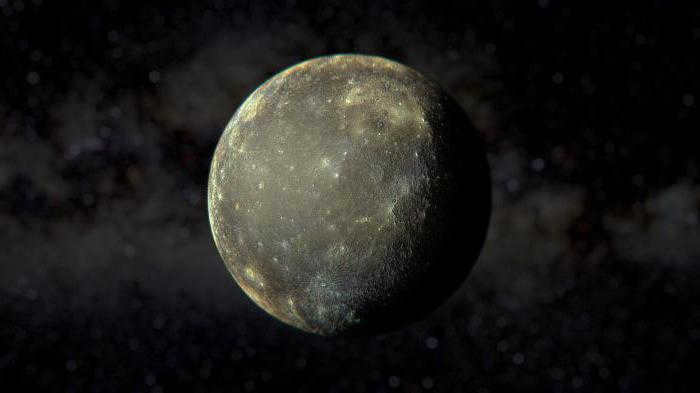
The hue of the celestial entity
By utilizing imagery captured by space satellites and terrestrial telescopes, the precise color of Mercury has been ascertained. The entire expanse of the planet is blanketed in ashen boulders that were formed through the solidification of molten lava. The cooling of the magma and the subsequent creation of the rocky formations transpired billions of years ago. Mercury now stands as a celestial body comprised entirely of exposed rock. According to scientific findings, there have been no indications of erosion or tectonic activity on the planet for several million years. Alterations to the planet’s landscape solely occur as a result of meteorite impacts, which carve furrows into Mercury’s surface.
According to geologists who have analyzed the images, there is currently no evidence of active volcanoes on the surface of Mercury. The color of Mercury, if it were to be painted by flowing streams of hot magma, can only be speculated at this point. However, as it stands today, Mercury presents itself as a featureless gray planet.
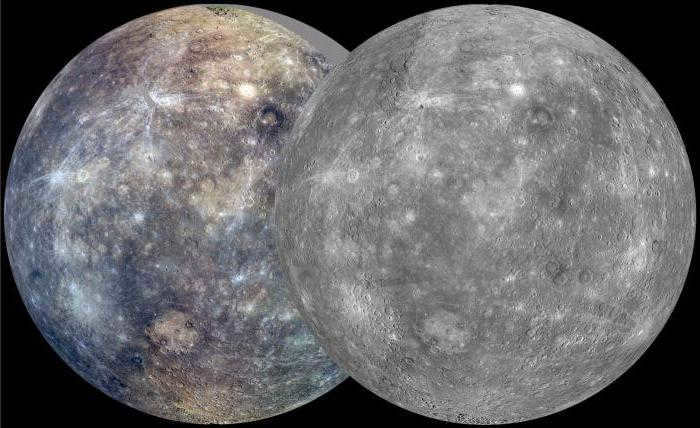
Exploring Landscapes
Thanks to advancements in space technology, we now have the ability to gain a deeper understanding of the universe, including valuable information about the various planets within our solar system. Today, let’s focus our attention on Mercury:
- Mercury experiences a day that lasts approximately 59 Earth days, which is the time it takes for the planet to complete one full rotation on its axis.
- In terms of its orbit around the Sun, Mercury completes a full circle in about 88 Earth days, which is the equivalent of one year on this planet.
- One notable aspect of Mercury is its extreme temperature fluctuations. During the night, the planet’s surface cools to a bone-chilling -183 degrees Celsius, while during the day, the intense heat from the Sun can raise temperatures up to a scorching +430 degrees Celsius. This drastic temperature difference is due to Mercury’s inability to retain heat.
- The composition of Mercury’s exosphere, which is a type of atmosphere, changes depending on its distance from the Sun. Scientists have discovered that it contains sodium, calcium, and magnesium, and the concentration of these substances fluctuates as Mercury moves closer to or farther away from the Sun.
- Despite its challenging visibility in the sky, our ancestors were aware of Mercury’s existence thousands of years ago.
- Venus and Mercury are the only two planets in the solar system that lack natural satellites or rings.
- Mercury possesses the largest reserves of sulfur and has also been found to contain water ice and organic materials.
This article will explore an intriguing and practical topic: the correlation between colors and planets.
The Sun has an orange hue.
The Sun signifies vitality, masculinity, self-assurance, nourishment, social progress, and ego. By embracing the orange color, you absorb the energies associated with these qualities. Furthermore, orange stimulates a desire for solitude and a break from external stimuli.
The moon has a pale, creamy color.
The serene white color promotes relaxation and tranquility. If your bedroom is adorned in white, you will experience enhanced relaxation within its confines. Moreover, white serves as an ideal backdrop for reading, fostering concentration and attentiveness.
The color red symbolizes strength and activity, serving as a motivator and inciting action. It is an attention-grabbing color that can be used to draw attention to oneself or highlight a project.
The color green, represented by Mercury, is associated with intelligence and can help enhance absorption and learning. It also facilitates negotiation and communication. Consider using green in meeting rooms or children’s rooms.
Jupiter is associated with knowledge, wisdom, learning, and development. By incorporating the color associated with Jupiter, you can encourage these aspects in yourself or someone else. However, be cautious as it may have a negative impact on the psyche of individuals who are naturally passive and lazy.
It is the hue of imagination. It can be employed to allure a dreamy disposition, a female and a partner into your existence.
If you desire to replicate the effect of a grave individual and artificially dominate the conversationalist – utilize this hue. Have you observed that businesspeople and solemn individuals fancy the hue black? It is genuinely organizing. The drawback is a burden in the mind, inertia, and sorrow. Lovely ladies, please don’t perpetually don black. It entices sorrow into your existence.
Ketu embodies the hue purple.
Ketu embodies the planet of spirituality and transformation. You can utilize this hue if you wish to broaden your awareness, but you must exercise caution because the downside of this is schizophrenia and severe unease.
Typically, these hues are reused to grab attention, but they become monotonous quite quickly. For instance, you may have spotted a vibrant banner on your commute to work, but after a week it lost its appeal, just another run-of-the-mill banner.
By blending colors, you can achieve captivating outcomes. Take turquoise-blue, for example, which is a combination of blue and a hint of green. This color induces a sense of physical tranquility. Moreover, it diminishes aggression and enhances emotional stability.
Here’s another example. Brown is a blend of red and green (red + yellow + blue). This color elicits a sense of calmness and reliability. Dark shades of brown can bring about a somber mood, while lighter shades instill a feeling of security. Individuals who prefer these hues typically possess a strong and composed demeanor, or they simply prefer not to stand out from the crowd.
Experiment with colors and achieve the desired effect!
After you have positioned your house or apartment according to the cardinal directions, divided it into sections, and determined the purpose of each room, it is time to consider the arrangement of the rooms. It is important to remember that the living room encourages socializing, the dining room enhances appetite, the study promotes productivity and mental alertness, and the bedroom helps with relaxation. Additionally, the north side is associated with professional activities, the southwest with relationships, the northeast with education, and the northwest with entertainment and relaxation. How can we achieve this? By studying Vastu. Every object on Earth is influenced by nine planets – the Sun, Moon, Mars, Mercury, Jupiter, Venus, Saturn, Rahu, and Ketu – and each house is influenced by these ruling planets. Rahu and Ketu are considered minor or “shadow” planets. While these planets may be unfamiliar in Western astrology, they hold great significance in Vedic astrology. Now, let’s delve a bit deeper into each planet.
THE SUN – exerts the strongest influence in the East.
The eastern region holds significant importance. Any actions taken in the east or facing east have a high chance of achieving success. As the sun rises in this direction, matters related to career, external activities, business, education, and influence will thrive and prosper in this area.
Rooms located in the Eastern sector are ideal for prayers and meditation, and it is recommended to have an altar placed here. Rooms influenced by the masculine energies of the Sun are particularly favorable for male residents and activities.
Sphere of influence: Health, charisma, career, power, vitality, masculine energy.
Color: Dark yellow, orange, saffron, terracotta, brown, gold, metal, shades of blue, white. Light, bright, clean colors are preferred. It is advised to avoid using the color red.
The MOON exerts its strongest influence in the Northwest direction.
The Moon is often associated with femininity and is seen as a symbol of maternal energy, providing life and nourishment. It governs our subconscious mind and intuitive abilities, guiding us towards healing and transformation. Just as the Sun represents the spirit, the Moon represents our emotions and everything that relates to our soul. It has a profound influence on the part of ourselves that is not driven by logic, but rather by feelings and perception.
The northwest sector is known for its light and vibrant energy, and it is responsible for bringing about changes in our lives. It is also associated with travel, children, guests, means of transportation, and animals. If you are seeking change in your life, it is advisable to pay attention to the northwest sector. Take a look at what you have in that area and consider how open and bright it is. Perhaps it would be beneficial to relocate that heavy closet to the Southwest?
If the Vastu in the Northwest of your home is favorable, it can lead to an increase in your fame and respect, as well as an improvement in your relationships and communication. It is especially beneficial for women to reside and engage in activities in rooms that are ruled by the feminine energies of the Moon.
The Moon also has a significant influence on bathrooms and water reservoirs according to Vastu. It is believed that the Moon affects the inhabitants of the house through the bathroom, which is considered a place of purification and renewal.
The Northwest Vastu has a sphere of influence that includes relationships, emotions, travel, movement, feminine energy, change, and communication. When it comes to colors, it is recommended to use milky white, pearl, steel, silver, purple, and light tones of blue, green, and pink. Dark and dull tones, especially gray and black, as well as red colors should be avoided.
Mars is often seen as a representation of struggle and symbolizes the determined actions, choices, and achievements of humanity in all aspects of life. It embodies courage, determination, impulsiveness, and is associated with the element of fire. Mars is known for its volatility and destructive nature, often considered as the patron of wars, but it also serves as a protector of homes, preventing conflicts and disputes.
Despite its negative connotations, Mars can also bring vitality and prosperity, depending on an individual’s personal horoscope. Those who have their kitchen planned in the South or South-East direction may receive prosperity from the influence of Mars. Additionally, the ideal placement for a fireplace or stove is in the Southeast area.
The southern region is associated with assertiveness and masculinity. If you lack these qualities, consider focusing on the southern side of your home. It is also the ideal location for your gym equipment or sword collection. Vastu defects in the south can lead to various problems and losses, while a harmonious Mars can enhance religiosity, truthfulness, strict discipline, and authority.
Sphere of Influence: Vitality, strength, charm, prosperity, research, technology, war.
Color: Various shades of burgundy, red, coral, crimson, and wine. Avoid gray, brown, and blue.
Venus has the most influence in the southeast.
Venus governs the sensual aspects of human nature, promoting love, passion, beauty, and the arts. It also enhances eloquence and has an impact on the parlor, bedrooms, and women’s health in the home.
The Southeast is considered the realm of feminine energy in the household. To enhance relationships and create harmony within your family, it is important to first balance this area of your home. While it is not advisable to have a bedroom in this sector, it is an ideal location for a kitchen or dining room.
Areas of influence: Beauty, luxury, coziness, comfort, female happiness and health, love, and pleasure.
Color scheme: Embrace a rainbow effect with muted tones, variegated (yet subdued) colors, and light shades of blue, pink, silver, and white. Avoid dark, heavy colors, as well as overly bright and harsh shades.
MERCURY – exerts its strongest influence in the North.
The northern sector is associated with communication, business, finance, as well as intellect and study. It is important to take stock of what you have in the northern sector and make some adjustments. Clear out any clutter, clean up the space, let in more light, and create a sense of openness. Additionally, it is beneficial to incorporate water elements in this area. By following these simple recommendations, you can greatly improve your business prospects and attract or retain finances.
Having positive Vastu in the North can enhance studies, business endeavors, communication skills, and overall character development. Mercury, which governs this sector, also influences the condition of the entrance hall, the surrounding garden, indoor flowers, verandah, and especially business-related matters.
Areas of influence: Communication, socializing, study, intelligence, finances, business, commerce, guests, childhood.
Color: All shades of green, blue, gray, brown. Avoid red, orange, and dark colors.
JUPITER and Ketu exert the greatest influence in the Northeastern region.
Jupiter, being the largest planet, is associated with wisdom, knowledge, expertise, learning, jewelry, harmony, law, and religion. It dispels darkness and stimulates mental activity.
The Northeast sector is considered one of the most significant areas in a home. It is important to note that the head of Vastu Purusha is located in this sector. It should be kept as open as possible, free from any clutter or rubbish. This sector serves as a channel for positive energy to flow into your house. Therefore, it should always be kept clean and minimalistic in terms of furniture.
An optimal Vastu in the North-East sector enhances one’s character, commands respect, strengthens their best qualities, and promotes spiritual growth. Activating this sector will bring overall good fortune to the entire household.
Area of control: Spirituality, expansion of consciousness, realization, prosperity, good luck, childhood, growth, nurturing, learning, good fortune, spirituality, respect.
Color: Any shades of yellow, cream, gold, orange, blue. It is advisable to avoid dark colors, as well as shades of red, blue, and purple.
SATURN – holds the greatest power in the Western region.
Saturn represents the driving force of growth, which drives an individual to fulfill their life purpose. In terms of human characteristics, it corresponds to focus and restraint.
Saturn is the planet of rules, norms, and limitations. It is the slowest and darkest planet, so its sphere of influence is believed to encompass all the dark areas of a house: closets, pantries, basements, etc.
If your home’s entrance is located in the Western sector, it can potentially lead to issues such as divorce, depression, uncontrollable sexual behavior, and a tendency to procrastinate. However, if the Western sector is harmonious and closed off, the presence of Saturn can bring increased popularity, academic success, and happiness.
The Western sector should be treated with the utmost respect. It should not be overly open, but always kept clean and tidy. It is an excellent area for discipline and asceticism. Additionally, it is well-suited for the dining area, as well as the toilet and garbage can.
Sphere of influence: Wisdom, old age, study (diligence), discipline.
Color: Purple, blue, mauve, lilac, black, dark cherry, brown. However, it is important not to overuse these colors, as they can intensify Saturn’s negative influence.
EARTH, Rahu – exert the most influence in the Southwest sector.
The southwestern area of your house is ideal for storing heavy items and creating a sense of closure. Whether it’s a potted ficus, a 32 kg kettlebell, a closet, or a cherished family heirloom, placing it in the southwest will help ensure its longevity. This is a space for keeping things secure and out of sight, rather than for opening up and decluttering. For instance, books can be safely stored here, as they are unlikely to be disturbed or even opened.
Additionally, the southwest is the perfect location for a master bedroom. This area is associated with Rahu, which represents large, dark rooms and imposing doors. To enhance the energy in this space, consider using heavy curtains, thick drapes, or blinds on the windows.
Areas of influence: Influence, protection, old age, death, discipline.
Color: Terracotta, brick, orange, brown, yellow, gold.
The central part of your house or apartment (Brahma stan) should remain open, bright, and devoid of furniture. The color scheme to be used in this area is white.
As you may have already deduced, each color attracts the energy associated with a specific planet, influencing both our physical and mental states. By examining the layout of a room, one can gain insight into the various aspects of its design.
Now that we understand why the sky appears blue on Earth – due to the scattering of the sun’s blue rays by our atmosphere – let’s explore the appearance of the sky on other planets within our solar system.
The Moon, Mercury, and Pluto lack any significant atmosphere, resulting in the absence of light reflection. This is why the sky on the Moon appears black, with the stars shining prominently.
The sky on Venus has a yellow hue, with a touch of gray at the horizon and a hint of orange at the zenith. The reason for this unique color is that Venus’ atmosphere absorbs the blue and green wavelengths of sunlight, allowing only the remaining rays to pass through and give the sky its distinct appearance.
On the other hand, the sky on Mars has a yellow-orange tint, but for a different reason. It is not due to the atmosphere of Mars scattering red rays more strongly, but rather because there is a significant amount of dust in its atmosphere. This dust gives the sky a reddish hue. Interestingly, during sunrise and sunset, the Martian sky at the zenith takes on a reddish-pink color, while in close proximity to the Sun’s disk, it can range from blue to violet. This is the complete opposite of the sunrise and sunset patterns observed on Earth!
Neptune contains a smaller amount of hydrogen and helium compared to other planets, but its atmosphere is rich in methane gas, which has a strong ability to absorb red rays. As a result, the sky on Neptune appears to be blue.
Unlike Neptune, Jupiter does not have a solid surface and is instead classified as a gas giant. The composition of gases in Jupiter’s atmosphere becomes denser as it extends deeper into the planet. This increased density causes the formation of solid, dense clouds at the top of the atmosphere. The colors of these clouds vary based on altitude, with lower clouds appearing blue, followed by brown and white, and finally red at the very top. Occasionally, gaps in the upper clouds allow for glimpses of the lower layers.
I’ve always been curious about the potential range of colors present on other worlds – colors that we have yet to witness and may never have the opportunity to see due to the limitations of our vision.

Reply to the post “Awesome Girl.”
Each weekday morning as I commute to work, I pass by the identical public garden with its fancy rubber paths designed for joggers. The traffic lights and subsequent minor traffic jam cause a delay of about 10-15 minutes right in front of this square, and I always end up in the rightmost lane, providing me with a perfect view and ample time to observe.
For the past three years, I have noticed a man there who appears to be around 50-55 years old.
Initially, he would gingerly stroll along these paths with the aid of a walker. He did so quietly. However, he did it every single day.
Over time, he began walking with increasing confidence while still using the walker.
Eventually, he replaced the walker with two canes. He continued to move slowly at first, but his movements gradually grew more assured.
Then, he progressed to using just one cane. And he continued to walk in the same manner.
Then, he proceeded to walk independently. Initially, he cautiously extended his arms, as if trying to maintain balance. Eventually, he resorted to simply shuffling his feet.
With each passing week, his alertness increased, and his gait gradually approached normalcy.
Come rain or shine, he could be seen every day in that square, regardless of the weather conditions.
About a year ago, I witnessed him running. Admittedly, he was moving slowly, carefully monitoring his balance and struggling somewhat.
But he was running, damn it. I still recall when he used to shuffle around with the assistance of a walker. And now he’s running. I felt compelled to go out and offer my congratulations.
At present, he runs with a considerable amount of confidence. It may be a slow pace, but speed isn’t necessary, in my opinion.
I’m not privy to the details of his circumstances – perhaps he experienced a stroke, injury, or underwent an operation. Nevertheless, I greatly admire his determination and discipline.
For over two years, I have been walking with difficulty every day, at least on weekdays. But now, I can proudly say that I am able to run!
Wow, if you happen to read this (which is unlikely, but still), I want you to know that I am your fan!
My Reaction to the Article “When we were young.”
It was the year 1999 when I called my girlfriend from the train station. I excitedly told her that I had bought tickets for the overnight train from Moscow to St. Petersburg, so she would be waiting for me at Leningradsky station in just two hours.
The next day, we found ourselves at Peterhof, enjoying the beautiful scenery.

During our visit to Peter and Peterhof, we spent the entire day exploring and capturing memories. Armed with a film camera, I focused on photographing the beautiful surroundings instead of taking selfies. Every frame was dedicated to capturing the essence and beauty of the place we were in.




At nightfall, we boarded the train to make our way back.
Years later, the girl admitted to me that it was one of the most romantic gestures I had made, and it ultimately influenced her decision.
And so, two years later, the situation unfolded like this:

-100 kilograms in one year
Disclaimer: Firstly, it is important to note that it is not advisable to let your weight reach such extreme levels. Secondly, the approach suggested may not be suitable for everyone.
Background: My weight gain journey began when I turned 22 years old. At that point, I was already weighing around 100 kg with a height of 183 cm. Unfortunately, each year, I continued to gradually gain an additional 5-10 kilograms. How did this happen? Well, it was due to an improper and unhealthy diet, a sedentary lifestyle, neglecting self-care, and battling prolonged periods of depression. As a result of this combination, I found myself weighing a staggering 240 kg by the time I turned 34 years old.
After undergoing treatment for this exact depression and getting my mind back in order, I was horrified when I took a look at myself and realized that something needed to change. I made an appointment with an endocrinologist (who has been guiding me throughout this process), and took the necessary steps to assess my situation. As of August 10, 2022, my weight was recorded at 236.7 kg. The endocrinologist provided me with some recommendations, which included establishing a consistent sleep schedule, completely eliminating alcohol and fast food from my diet, making an effort to track my calorie intake and consume a more balanced diet, and incorporating some physical activity into my routine.
How do I manage to juggle everything? It’s actually quite simple – I thrive in this lifestyle. I’ve never been too fussed about food, so I don’t stress about eating right or counting calories. I genuinely enjoy my current routine, from hitting the gym to indulging in some boxing. Of course, I do feel tired at times, but that’s just part of the game. Life is truly amazing for me right now, and I couldn’t be happier.
I want to express my gratitude to all those who have been supporting me throughout this journey (and they will all read this post as I’ll be sharing the link). Without all of you, it would have been much more challenging! A special thanks to the “Lose Weight with Peekaboo” chatroom for the constant support and extra motivation (they will leave the link in the comments).
I’m open to any questions, so feel free to ask away. I’ll probably do my next post in the fall or around the new year.

